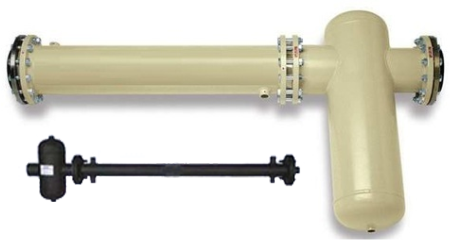Our Product Range
- Activated Carbon Filter
- Air Dryers
- Air Receivers
- Compressor Parts
- Filters for Air Compressor
- Moisture Separator
- Multi Stage Air Compressor
- Screw Air Compressor
- Single & Two Stage Dry Vacuum Pumps
- Single Stage Air Compressor
- Two Stage Air Compressor
- Vertical Water cooled Air Compressor
- Water cooled After cooler
Water cooled After cooler

The compressed air discharged from an air compressor is hot. Compressed air at these temperatures contains large quantities of water in vapor form. As the compressed air cools this water vapor condenses into a liquid form. As an example if an aftercooler is not used, a 200 scfm compressor operating at 100 psig introduces 45 gallons of water into the compressed air system each day.
A moisture separator installed at the discharge of the aftercooler removes most of the liquid moisture and solids from the compressed air. Utilizing centrifugal force, moisture and solids collect at the bottom of the moisture separator. An automatic drain should be used to remove the moisture and solids.
Functions of compressed air aftercoolers:
- Cool air discharged from air compressors via the heat exchanger
- Reduce risk of fire (Hot compressed air pipes can be a source of ignition)
- Cool air discharged from air compressors via the heat exchanger
- Reduce compressed air moisture level
- Increase system capacity
- Protect downstream equipment from excessive heat
